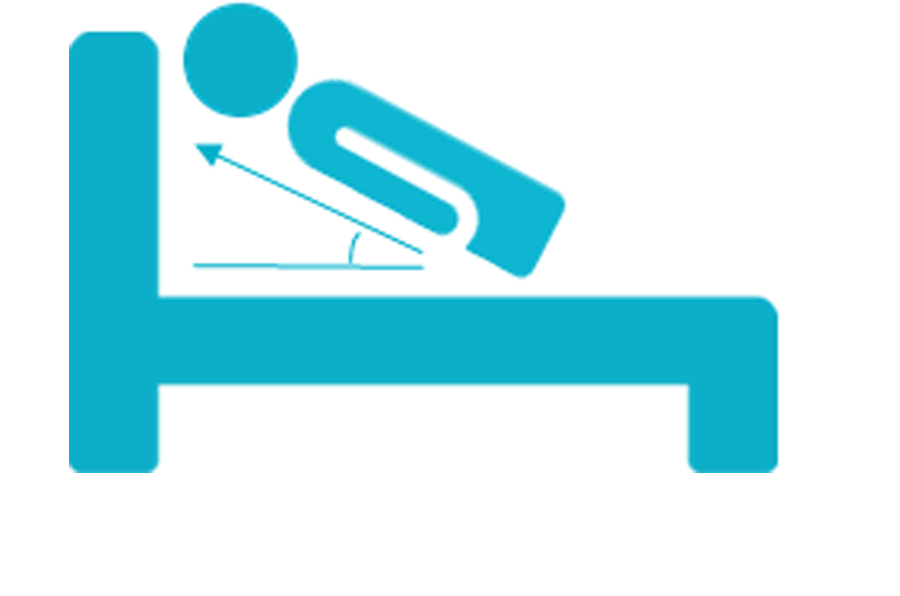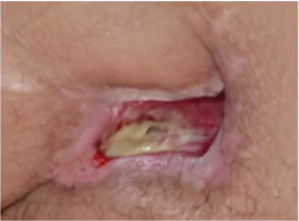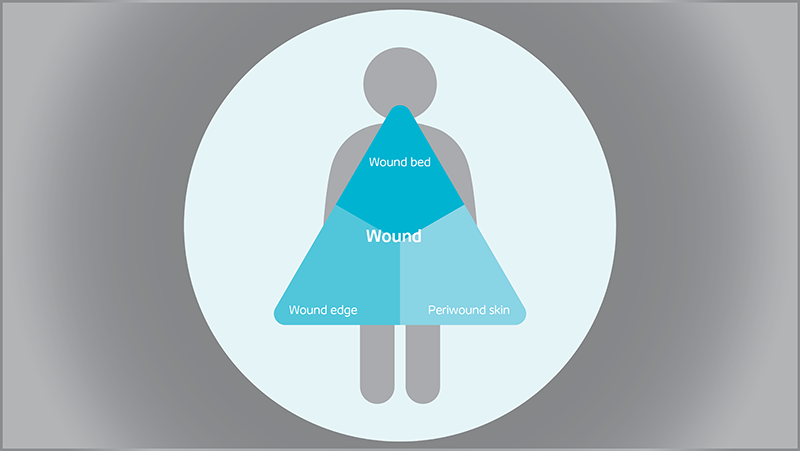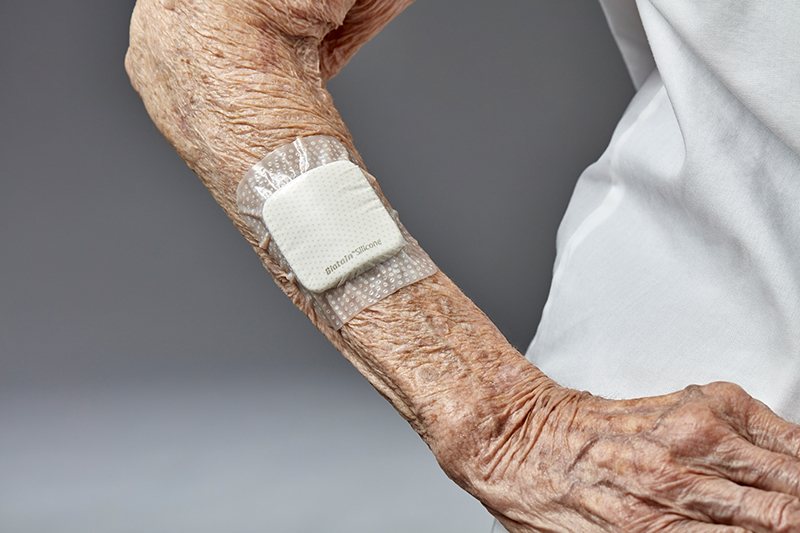How to manage pressure injuries

Using repositioning to manage a pressure injury
Repositioningis an important technique to prevent pressure injuries from forming. You can also use repositioning once a pressure injury has formed. Repositioning can help you:
- reduce the length of time pressure is placed on the body; and
- reduce the amount of pressure placed on a vulnerable area of the body.1
To learn more about repositioning and how to reposition your patient - click here.
Managing pressure injury pain with repositioning
Pressure injuries are quite painful. So helping to manage the pain your patient is feeling is also an important part of treating pressure injuries. Repositioning can be a useful technique here as well.
Try to:
- position your patient off the pressure injury
- use a lift, transfer sheet or slide sheet to minimise friction and/or shear
- coordinate when you give your patient pain medication so you can give it at the same time as when you change the dressing or reposition them1
Using support surfaces to manage a pressure injury
Anothermethod for treating pressure injuries is to use a support surface.
A support surface is a device specially designed to redistribute pressure. Support surfaces help to distribute the pressure on the part of your patient’s body surface that touches the device.2 As your patient sinks into the support surface, their weight is distributed over a larger area.3
You should consider using a support surface in the following situations:1
- If you’re not able to position your patient off of an existing pressure injury.
- If your patient has pressure injuries on two or more turning surfaces (e.g. the sacrum and the trochanter)
- If your patient has a chronic pressure injury.
- If you believe your patient has a high risk of developing more pressure injuries.
- If your patient has undergone flap or graft surgery.
- When the current support surface doesn’t provide adequate support.
Remember:
Support surfaces should be a part of your total pressure injury management plan. They don’t replace repositioning.1
Using wound dressings to treat pressure injuries
Wounddressings are an important part of pressure injury care. They help maintain a moist wound healing environment, which is necessary for a pressure injury to heal. A moist healing environment also helps to reduce pressure injury pain.1
How to choose the right wound dressing
When choosing the right wound dressing for your patient, you should consider the following factors:1
- how well the dressing keeps the wound bed moist;
- the pressure injury’s characteristics, specifically:
- amount and kind of exudate;
- condition of the surrounding or periwound skin;
- condition of the tissue in the wound bed;
- the wound’s diameter, shape and depth; and
- whether or not there is tunnelling or undermining.
- the pain your patient is experiencing. For example, if you choose a non-adherent dressing that doesn’t need to be changed frequently, you can help minimise the pain your patient experiences during a dressing change.

Find the right dressing for the pressure injury type
In the following chart, you can see which dressing types are best suited for the different pressure injury types.
|
Dressing type |
Pressure injury type |
Recommendations |
|
Hydrocolloid |
Non-infected Stage 2 pressure injuries |
Hydrocolloids don’t have to be changed as often. However, they can leave residue on the wound bed or surrounding skin. This can cause trauma and discomfort when you remove the dressing.1 |
|
Alginate |
Stage 3 and 4 pressure injuries with moderate exudate |
Alginates help to maintain a moist wound healing environment. However, you should avoid using them on a dry wound bed.1 |
|
Foam |
Stage 2 or higher with moderate/heavy exudate |
Foam dressings absorb wound exudate from the wound bed. However, you should avoid using a single piece of foam in cavity wounds.1 |
|
Super-absorbent |
With heavy exudate |
You should evaluate the dressing regularly to make sure it still matches the level of exudate in the wound.1 |
|
Silver-impregnated |
Infected or at high risk of infection |
A silver dressing reduces bioburden. Once the infection is under control, you should stop using this type of dressing. You should also avoid using it with patients that have silver sensitivities.1 |
Find the right dressing for pressure injury pain
Pressure injuries are painful, and they affect the patient’s quality of life.1 You can help reduce pressure injury pain by choosing a wound dressing that:
- doesn’t stick to the wound (i.e. is non-adherent);
- doesn’t need to be changed frequently; and
- manages the wound exudate levels.1
Did you know?
Wound dressings for pressure injuries help in two ways.
They help the pressure injury to heal, by:
- absorbing exudate;
- reducing bioburden;
- promoting autolytic debridement;
- protecting the wound and surrounding skin/tissue; and
- minimising shear strain.
They help manage pressure injury pain and improve patient well-being by:
- minimising pain associated with dressing changes;
- absorbing and controlling malodour; and
- reducing injury to the surrounding skin.1
References
- European Pressure Ulcer Advisory Panel. National Pressure Injury Advisory Panel and Pan Pacific Pressure Injury Alliance. (2019) Prevention and Treatment of Pressure Ulcers/Injuries: Clinical Practice Guideline. Emily Haesler (Ed.) EPUAP/NPIAP/PPPIA.
- Voegeli, D. (2012). Moisture-associated skin damage: aetiology, prevention and treatment. British Journal of Nursing, 21(9), 517-521.
- White, R. J. and Cutting, K. F. (2003). Interventions to avoid maceration of the skin and wound bed. British Journal of Nursing, 12(20), 1186-1201.
You may also be interested in…

HEAL e-learning
Learn how to assess and manage pressure injuries with this EWMA-endorsed course.

Patient case
Learn how a recurring pressure ulcer was managed with a silicone foam dressing.

Triangle of Wound Assessment
Conduct a holistic and systematic wound assessment with our tool.

